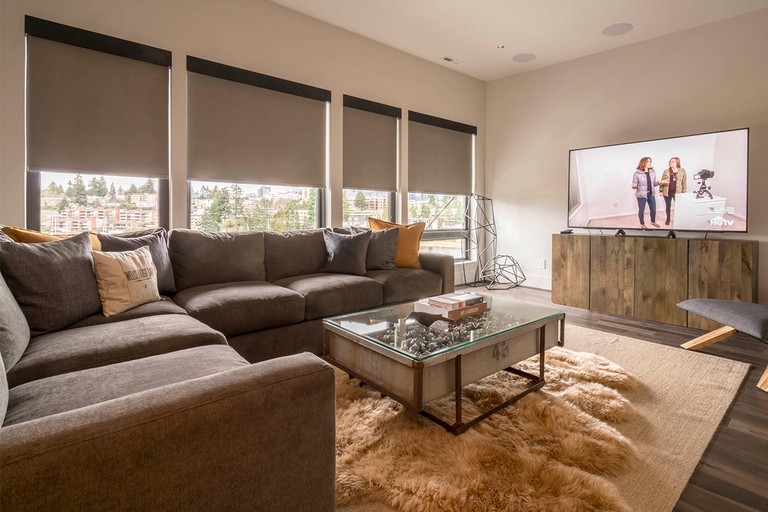Wipliance LLC, one of the nation’s leading system integrators headquartered in Bellevue, WA, was recognized with the 2022 Lutron Excellence Award for Best Resimercial Systems on their work on the Spire residences.
Spire is a 343-residence condominium tower in the South Lake Union neighborhood in Seattle- situated in the shadow of the Space Needle. Though a commercial project in many aspects of construction, there are many residential elements within the amenities spaces and residences. Wipliance’s involvement in this project started years before the tower was constructed, and required close collaboration with the developers, marketing team and commercial contractors responsible for elements of construction and wiring.
Wipliance fully outfitted the offsite sales center and model with Homeworks and Triathlon shading. We created a 3D projection system that allowed residents to see the future view from their condo via augmented reality. The Spire team had a vision of creating tailored packages for buyers to be able to easily add upgrades from a streamlined selection of approved offerings for shades and lighting controls.
In the finished building, Wipliance provided over 3700 Lutron shades ranging from manual to wireless motorized in every window of the tower. In addition to the private residences, Wipliance furnished Lutron shades and Homeworks controls for the building’s amenities spaces which include a chef’s kitchen, movie theater, coworking space, executive lounge, dance studio and 3 gyms- all with amazing views.
This project has been featured in Connected Design Magazine and Wipliance continues to work with Spire homeowners today to further enhance their residences with home automation solutions.
Custom integration leader Wipliance acquires Spokane, WA-based Huppin’s
(Spokane, Wash. July 6, 2022) – On July 2, 2022, Huppin’s, a 114-year family-owned residential and commercial technology solutions provider, was acquired by Wipliance, bringing to Eastern Washington and North Idaho a new generation of lifestyle solutions for home and business.
Recognized as the best in the Phoenix/Scottsdale metro for Smart Home Automation, Home Security and Home Theater.
The LIST is here...the winners of the thirteenth annual Best of Our Valley contest are here! Each year AZ Foothills asks readers to vote on their favorite Valley people, places, and more. The contest is answered with thousands of votes and hundreds of winners.
THE WINNERS LIST: HOME & DESIGN
Best Appliance Showroom: Ferguson’s
Best Architect/Architecture Firm: Drewett Works
Best Architectural Lighting: Lighting Unlimited
Q: I’ve been thinking about upgrading my house to a smart home. What smart features should I be looking for as I shop around?
A: Smart homes are becoming more and more popular — and with good reason. Home automation is the ultimate union of technology, convenience and security. The list of things smart homes can do is expanding daily, and so are the possibilities, which means that planning a smart home can be a dizzying experience.
Let’s keep it simple by focusing on five of the most important components of a smart home.
Advanced home network
You’ve probably heard of the “Internet of Things” by now. It refers to the wirelessly controlled network of devices that is becoming a bigger part of our lives and is central to the smart home. To maintain a highly functional Internet of Things, the automated home needs something a bit more robust than a wireless router tucked out of sight to maintain an unbroken blanket of Wi-Fi. It needs enterprise-class networking equipment, as well as several wireless access points placed strategically throughout the home.





